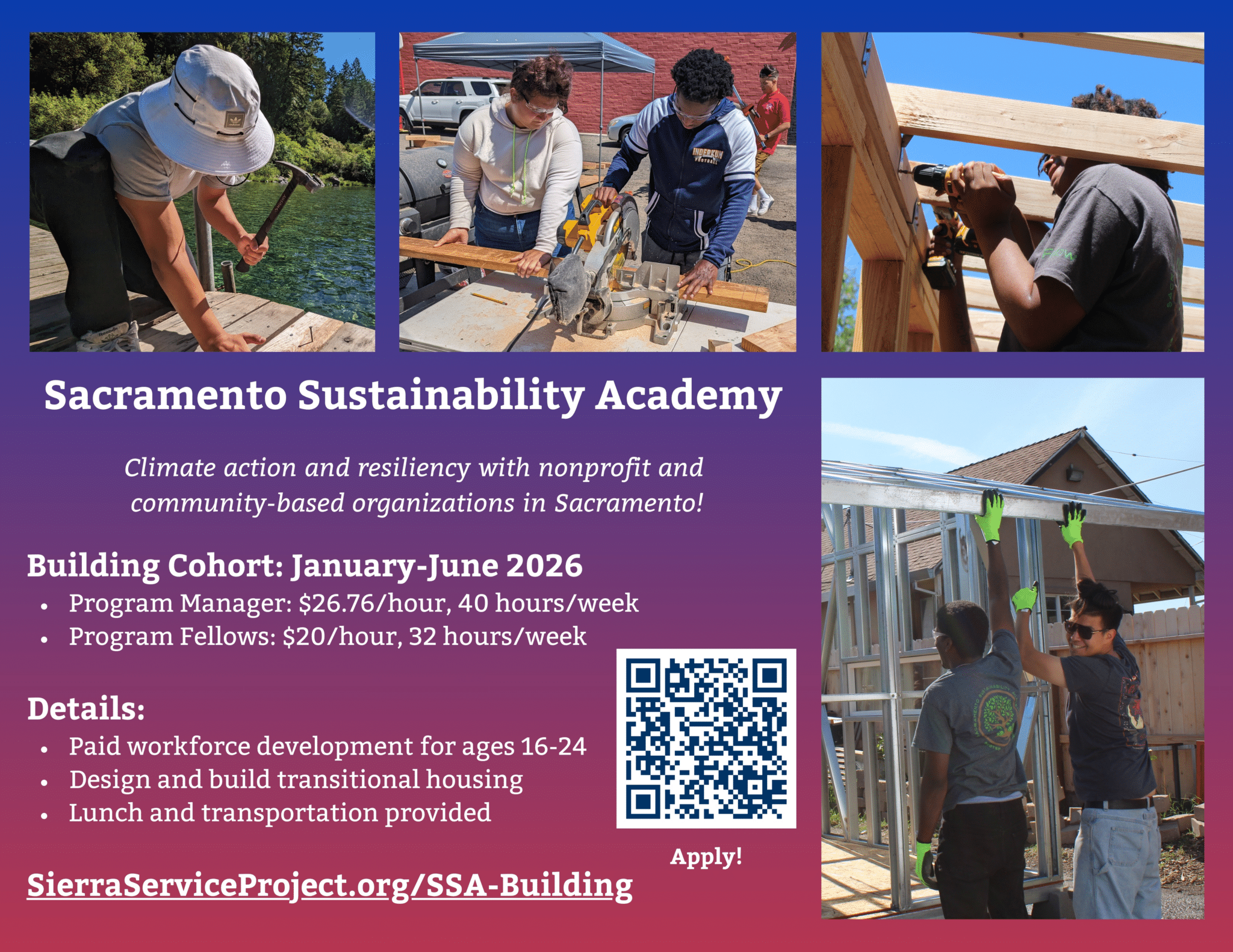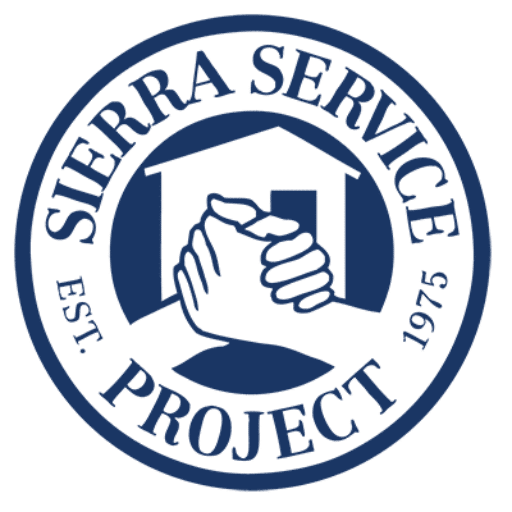
Announcing New Sac Sustainability Academy (SSA) Cohorts:
We are thrilled to share we have received funding from The Sacramento Children’s Fund: Measure L through the City of Sacramento to offer three additional SSA cohorts!
Applications are Open!
The Sacramento Sustainability Academy is a workforce development program to provide young people an introduction to climate action and community resilience work. Building on SSP’s history of providing youth and young adults with hands-on experience with tools, home repairs, and high impact community projects, the Academy is focused on energy efficiency through the lens of building science, urban agriculture as a tool for achieving food security/sovereignty through permaculture design principles (often referred to as Afro-Indigenous wisdom), and manufacturing design skills to provide young people high demand and cutting edge skills for high paying professions.
Program Info
We are hosting three architecture, building, and construction cohorts. The first will start in the winter 2026, beginning on January 13th and end on June 12th. The following cohorts will start in the fall and extend to June of the following year.
The schedule is consistent Tuesday through Friday from 8am – 4:30pm. Occasional weekend hours are required for special events.
Our upcoming cohort builds on the skills and foundation we have set with previous cohorts. We are partnering with WeForce California Inc. to expand the Safe Harbor Sustainable Eco-Housing Program.
Program Description
We will employ seven young people for the Sacramento Sustainability Academy workforce development education and training program that will build two tiny homes per program year over the next three years to expand the impact and scale of the Safe Harbor Sustainable Eco Housing program. Over the entire project timeline, twenty one youth will be hired, five tiny homes will be constructed, and 48 families with children will be provided transitional housing from homelessness to permanent housing. We expect this to serve between 96 and 144 youth under 18 to transition from homelessness into stable housing.
Program Priorities
Architecture
Architectural training strengthens our ability to observe and understand the physical and social composition of our communities, revealing patterns, gaps, and opportunities that might otherwise go unnoticed. By learning to analyze space, infrastructure, and human behavior together, architecture empowers people to envision healthier, more resilient neighborhoods and to design the critical systems—such as housing, transportation, green spaces, and community facilities—that support collective well-being. This perspective turns community members into active planners and problem-solvers, equipped to shape environments that reflect local needs and aspirations.
Building
Building and Building Information Modeling (BIM) training equips people with the tools to visualize how structures and infrastructure interact within the broader community landscape, making it easier to identify what is missing or underperforming. By teaching learners to map utilities, transportation networks, public facilities, and housing systems in precise digital models, BIM fosters a deeper understanding of community composition and the relationships between the built environment and daily life. This skillset helps residents, planners, and emerging professionals collaboratively design and advocate for the critical infrastructure—such as safe streets, energy-efficient buildings, and resilient public spaces—that their communities need to thrive.
Construction
Construction and trades training empowers individuals with practical, high-demand skills that directly address the infrastructure and economic needs of low-income communities. By preparing workers to build, repair, and maintain essential structures—such as homes, community facilities, and local businesses—these programs create pathways to stable, well-paying careers while strengthening neighborhood resilience. Trades training also cultivates problem-solving, leadership, and teamwork, enabling participants to contribute to projects that improve living conditions and stimulate local economies. In turn, communities benefit from a homegrown workforce capable of driving equitable development and long-term prosperity.
Housing
Innovative approaches to housing allow communities to design solutions that are both compassionate and economically sustainable, especially when they elevate the expertise of those who have experienced homelessness firsthand. By training homeless and formerly homeless youth in construction, design, and housing development, we empower them to address challenges they understand intimately—such as safety, accessibility, and the need for stability. Their lived experience becomes a vital asset in shaping a housing market that is responsive, humane, and grounded in real community needs. This blend of technical skill and personal insight leads to more effective, culturally attuned housing strategies that strengthen neighborhoods and ensure vulnerable populations are genuinely served.
Questions? Reach out to program leaders at ssa@sierraserviceproject.org.
